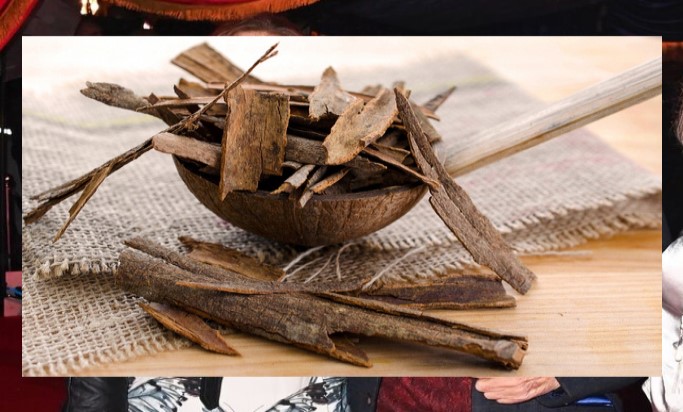Cassia Bark: Origins, Uses, Benefits, and Safety Guide

Cassia bark, also called Cinnamomum cassia bark or Chinese cinnamon, is a well-known spice with a deep history in both cooking and traditional medicine. Harvested from the Cinnamomum cassia tree, this aromatic ingredient offers a warm, spicy-sweet flavor that stands out in global cuisine. While often mistaken for Ceylon cinnamon, it has a thicker texture and a bolder, more robust taste.
Understanding Cinnamomum Cassia Bark
Botanical Background
This cinnamon variety originates from China, Myanmar, and nearby regions. The spice comes from the inner bark of the tree, which is dried and rolled into hard, reddish-brown sticks. Unlike Ceylon cinnamon’s delicate layers, cinnamomum cassia bark is thicker and rougher, giving it its signature strong aroma.
Key Characteristics
-
Color: Rich reddish-brown
-
Texture: Dense and woody
-
Flavor: Warm, spicy, with a slight bitterness
-
Aroma: Intense and sweet-spicy
Culinary Uses
In Global Cuisine
This cinnamon variant is prized for adding depth to both sweet and savory recipes.
Common Applications
-
Indian Dishes: Biryani, curries, and garam masala blends.
-
Chinese Recipes: Five-spice powder, braised meats, and herbal broths.
-
Middle Eastern Cuisine: Tagines, spiced rice, and stews.
-
Western Baking: Cakes, cookies, pastries, and festive beverages.
As a Beverage Spice
From chai tea to mulled wine, this aromatic bark infuses drinks with a rich, comforting warmth.
Nutritional and Chemical Profile
The spice contains valuable compounds, including:
-
Cinnamaldehyde: Responsible for its signature taste and fragrance.
-
Coumarin: Present in higher amounts than in Ceylon cinnamon.
-
Tannins and Polyphenols: Known for antioxidant activity.
Health Benefits
1. Rich in Antioxidants
Polyphenols in this spice may help protect the body from oxidative damage.
2. Digestive Aid
Traditionally used to ease bloating, gas, and mild stomach discomfort.
3. Blood Sugar Support
Some studies suggest it may help stabilize blood glucose levels.
4. Anti-Inflammatory Effects
Its natural oils may assist in reducing inflammation.
Traditional and Medicinal Uses
In Traditional Chinese Medicine (TCM)
Known as Rou Gui, cinnamomum cassia bark is seen as a warming herb, used to:
-
Boost circulation
-
Relieve cold-induced discomfort
-
Support kidney and heart health
In Ayurveda
Valued for stimulating digestion and enhancing appetite, especially with heavier foods.
Cassia vs. Ceylon Cinnamon
| Feature | Cassia (Cinnamomum cassia) | Ceylon Cinnamon (Cinnamomum verum) |
|---|---|---|
| Texture | Thick, hard | Thin, soft layers |
| Flavor | Strong and spicy | Milder and sweet |
| Coumarin | Higher content | Very low |
| Price | Less expensive | Higher cost |
Safety and Precautions
Coumarin Levels
Because this spice contains more coumarin, excessive use may affect liver health.
-
Safe limit: About half a teaspoon daily for adults in food preparation.
Possible Side Effects
-
Allergic reactions (rare)
-
Mouth or skin irritation
-
Drug interactions with blood thinners or diabetes medication
Storage Tips
To maintain potency:
-
Keep in an airtight jar.
-
Store in a cool, dark place.
-
Use whole sticks for longer shelf life.
How to Use in Everyday Cooking
Savory Uses
-
Add to soups and stews for a subtle spice note.
-
Include in rice dishes during cooking for extra aroma.
Sweet Uses
-
Grind into powder for cakes and cookies.
-
Add to hot drinks for a warming flavor.
Economic and Environmental Role
Farming of this cinnamon variety supports rural communities in Southeast Asia. Sustainable harvesting helps preserve tree populations and the surrounding ecosystem.
Conclusion
Cassia bark, or Cinnamomum cassia bark, is more than just a kitchen spice—it is a cultural and medicinal staple. Its bold flavor enriches recipes worldwide, while its natural compounds offer potential health benefits. Enjoyed in moderation, this aromatic bark can bring warmth, flavor, and tradition to any dish.



